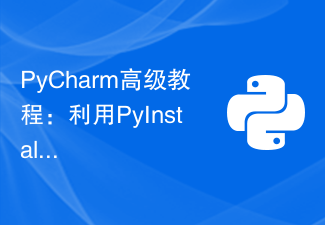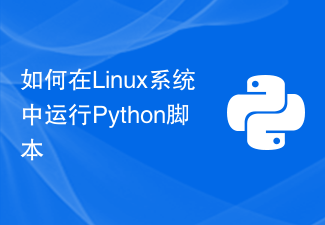
Introduction to Conda: Decrypting the mystery of conda requires specific code examples
Introduction:
In recent years, the Python language has developed rapidly and has become an important tool for data science and artificial intelligence. The preferred programming language in fields such as intelligence. As the number of Python packages continues to increase, the problem of managing these packages has gradually become apparent. Fortunately, a powerful tool appears in front of us, and that is Conda. This article will introduce the concept, installation method and common commands of Conda in detail, and demonstrate its practical use through specific code examples.
1. What is Conda?
Conda is an open source package management system and environment management system. It can install, manage and uninstall different versions of software packages and switch between different environments. Conda was originally designed for Python package management, but over time it has supported package management for a variety of programming languages.
2. Install Conda
First, you need to download the installation package corresponding to your operating system from the official website https://conda.io/miniconda.html. After the installation is complete, open the terminal (Linux or Mac) or command prompt (Windows) and run the following command to install:
bash Miniconda3-latest-Linux-x86_64.sh # Linux sh Miniconda3-latest-MacOSX-x86_64.sh # Mac Miniconda3-latest-Windows-x86_64.exe # Windows
Then follow the prompts to install. After the installation is complete, close the terminal or command prompt window and reopen it. , enter the conda --version command to check whether the installation is successful.
3. Use Conda
- Create an environment
Using the environment management function provided by Conda, you can easily create, clone and delete environments. Here are some commonly used commands:
-
Create a new environment called myenv and specify the Python version to use:
conda create --name myenv python=3.7
-
Clone an existing environment and name it mycloneenv:
conda create --name mycloneenv --clone myenv
-
Delete the environment named myenv:
conda remove --name myenv --all
- Management Software Package
Conda can easily install, update and delete software packages. The following are some commonly used commands:
-
Install the package named numpy:
conda install numpy
-
Update the package named numpy to the latest Version:
conda update numpy
-
Remove the package named numpy:
conda remove numpy
-
View the installed packages and their versions:
conda list
- Environment Switching
Conda allows you to quickly switch between different environments. The following are some commonly used commands:
-
Activate the environment named myenv:
conda activate myenv
-
Deactivate the current environment:
conda deactivate
4. A comprehensive example
Let us use a comprehensive example to demonstrate how to use Conda to create a virtual environment and install some commonly used Python packages, and how to switch between different environments.
-
Create a new environment named myenv and specify the Python version to use:
conda create --name myenv python=3.7
-
Activate the environment:
conda activate myenv
-
Install numpy and pandas packages:
conda install numpy pandas
-
View installed packages and their versions:
conda list
-
Create A new Python script file and import the numpy and pandas packages in it, write some code:
import numpy as np import pandas as pd # 一些代码...
-
Deactivate the environment:
conda deactivate
Through this comprehensive example, you can learn the basic usage of Conda and how to install and use different versions of Python packages in different environments.
Conclusion:
This article introduces the concept, installation method and common commands of Conda in detail, combined with specific code examples, hoping to decipher the mystery of Conda and help readers better understand and use Conda . I believe that by using Conda, you will be able to manage Python packages and environments more conveniently, improve development efficiency, and further broaden the application scope of Python in various fields.
The above is the detailed content of Introduction to Conda: Demystifying the mystery of conda. For more information, please follow other related articles on the PHP Chinese website!
 使用pyjokes创建随机笑话的Python脚本Sep 13, 2023 pm 08:25 PM
使用pyjokes创建随机笑话的Python脚本Sep 13, 2023 pm 08:25 PM您想为您的Python脚本或应用程序添加一些幽默吗?无论您是构建聊天机器人、开发命令行工具,还是只是想用随机笑话自娱自乐,pyjokes库都可以为您提供帮助。借助pyjokes,您可以轻松生成各种类别的笑话,并根据您的喜好进行自定义。在这篇博文中,我们将探讨如何使用pyjokes库在Python中创建随机笑话。我们将介绍安装过程、生成不同类别的笑话、自定义笑话、在控制台应用程序或网页中显示它们,以及处理可能发生的任何潜在错误。安装pyjokes在我们开始使用pyjokes创建随机笑话之前,我们需
 用于监控网站变化的Python脚本Aug 29, 2023 pm 12:25 PM
用于监控网站变化的Python脚本Aug 29, 2023 pm 12:25 PM在当今的数字时代,了解网站上的最新变化对于各种目的都至关重要,例如跟踪竞争对手网站上的更新、监控产品可用性或随时了解重要信息。手动检查网站是否有更改可能既耗时又低效。这就是自动化发挥作用的地方。在这篇博文中,我们将探讨如何创建Python脚本来监控网站更改。通过利用Python的强大功能和一些方便的库,我们可以自动化检索网站内容、与以前的版本进行比较并通知我们任何更改的过程。这使我们能够保持主动并及时对我们监控的网站上的更新或修改做出反应。设置环境在开始编写脚本来监控网站更改之前,我们需要设置P
 PyCharm高级教程:利用PyInstaller将代码打包为EXE格式Feb 20, 2024 am 09:34 AM
PyCharm高级教程:利用PyInstaller将代码打包为EXE格式Feb 20, 2024 am 09:34 AMPyCharm是一款功能强大的Python集成开发环境,提供了丰富的功能和工具来帮助开发者提高效率。其中,PyInstaller是一个常用的工具,可以将Python代码打包为可执行文件(EXE格式),方便在没有Python环境的机器上运行。在本篇文章中,我们将介绍如何在PyCharm中使用PyInstaller将Python代码打包为EXE格式,并提供具体的
 Python脚本自动刷新Excel电子表格Sep 09, 2023 pm 06:21 PM
Python脚本自动刷新Excel电子表格Sep 09, 2023 pm 06:21 PMPython和Excel是两个强大的工具,结合起来可以开启自动化世界。Python具有多功能的库和用户友好的语法,使我们能够编写脚本来有效地执行各种任务。另一方面,Excel是一种广泛使用的电子表格程序,它为数据分析和操作提供了熟悉的界面。在本教程中,我们将探索如何利用Python来自动化刷新Excel电子表格的过程,从而节省我们的时间和精力。您是否发现自己花费了宝贵的时间使用更新的数据手动刷新Excel电子表格?这是一项重复且耗时的任务,可能会真正降低生产力。在本文中,我们将指导您完成使用Py
 Flask安装配置教程:轻松搭建PythonWeb应用的利器Feb 20, 2024 pm 11:12 PM
Flask安装配置教程:轻松搭建PythonWeb应用的利器Feb 20, 2024 pm 11:12 PMFlask安装配置教程:轻松搭建PythonWeb应用的利器,需要具体代码示例引言:随着Python的日益流行,Web开发也成为了Python程序员的必备技能之一。而要进行Python的Web开发,我们需要选择合适的Web框架。在众多的PythonWeb框架中,Flask是一款简洁、易上手且灵活的框架,备受开发者们的青睐。本文将介绍Flask框架的安装、
 如何在Linux系统中运行Python脚本Oct 05, 2023 am 08:05 AM
如何在Linux系统中运行Python脚本Oct 05, 2023 am 08:05 AM如何在Linux系统中运行Python脚本作为一种强大的脚本语言,Python在Linux系统中广泛应用。在本文中,我将为你介绍如何在Linux系统中运行Python脚本,并提供具体的代码示例。安装Python首先,确保你的Linux系统上已经安装了Python。在终端中输入以下命令来检查系统是否已安装Python:python--version如果显示了
 完全指南:确保准确查看Django版本Feb 19, 2024 pm 06:33 PM
完全指南:确保准确查看Django版本Feb 19, 2024 pm 06:33 PM专业指南:如何准确查看Django版本,需要具体代码示例引言:Django是一个高度受欢迎的PythonWeb框架,其不断更新的版本对于开发者来说非常重要。查看Django版本对于确保使用最新功能和修复了的漏洞至关重要。本文将介绍如何准确查看Django版本,并提供具体的代码示例。一、使用命令行查看Django版本使用命令行是最简单快捷的方式来查看Djan
 如何利用Python脚本在Linux系统中实现并行计算Oct 05, 2023 am 09:09 AM
如何利用Python脚本在Linux系统中实现并行计算Oct 05, 2023 am 09:09 AM如何利用Python脚本在Linux系统中实现并行计算,需要具体代码示例在现代计算机领域,对于大规模数据处理和复杂计算任务,使用并行计算可以显著提高计算效率。Linux作为一个强大的操作系统,提供了丰富的工具和功能,可以方便地实现并行计算。而Python作为一种简单易用且功能强大的编程语言,也有许多库和模块可以用于编写并行计算任务。本文将介绍如何利用Pyth


Hot AI Tools

Undresser.AI Undress
AI-powered app for creating realistic nude photos

AI Clothes Remover
Online AI tool for removing clothes from photos.

Undress AI Tool
Undress images for free

Clothoff.io
AI clothes remover

AI Hentai Generator
Generate AI Hentai for free.

Hot Article

Hot Tools

EditPlus Chinese cracked version
Small size, syntax highlighting, does not support code prompt function

MinGW - Minimalist GNU for Windows
This project is in the process of being migrated to osdn.net/projects/mingw, you can continue to follow us there. MinGW: A native Windows port of the GNU Compiler Collection (GCC), freely distributable import libraries and header files for building native Windows applications; includes extensions to the MSVC runtime to support C99 functionality. All MinGW software can run on 64-bit Windows platforms.

SublimeText3 Chinese version
Chinese version, very easy to use

PhpStorm Mac version
The latest (2018.2.1) professional PHP integrated development tool

SublimeText3 Linux new version
SublimeText3 Linux latest version





